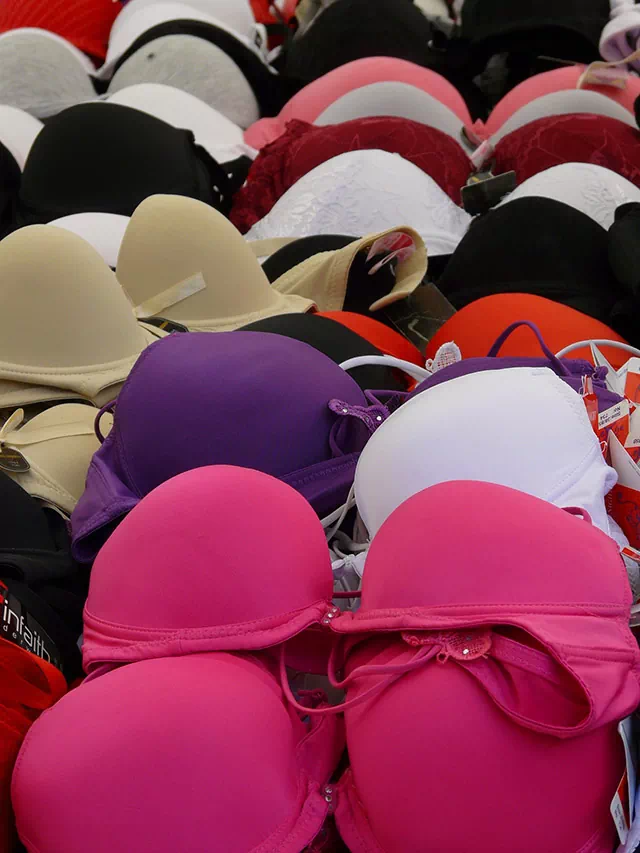Some women may experience sagging, back pain, or skin irritation if they do not wear a bra that provides adequate support. Additionally, not wearing a bra can affect a woman’s appearance, particularly if her breasts are large, as they may bounce and move more during physical activity. Ultimately, whether to wear a bra or not is a personal choice, and women should consider their individual needs, comfort level, and physical activity when making this decision.
1. Reduced support
reduced support is one of the main disadvantages of not wearing a bra. Breasts have no natural support structure and rely on the surrounding skin, muscle, and ligaments to maintain their shape. Over time, this can lead to sagging and discomfort. Wearing a bra can provide extra support to the breasts, helping to prevent sagging and maintain their shape. Additionally, a well-fitted bra can distribute the weight of the breasts evenly, reducing pressure on the shoulders, back, and neck.
2. Breast pain
Breast pain is a common issue that some women experience, and it can be related to not wearing a bra. Breasts are composed of glandular tissue and fat, and without the support of a bra, the breasts can experience pain, discomfort, and even injury. This can be especially noticeable during physical activity when the breasts move and bounce, which can cause strain on the breast tissue and surrounding muscles, leading to pain.
Wearing a properly fitting bra can provide support and help distribute the weight of the breasts, reducing the risk of breast pain. However, it is important to find a bra that fits well and offers the right level of support for individual needs, as wearing a poorly fitting bra can also lead to discomfort and pain.
3. Sagging breasts
Sagging breasts can be a potential disadvantage of not wearing a bra, especially for women with larger breasts. Breasts are composed of glandular tissue and fat, and without proper support, the weight of the breasts can cause the skin and tissue to stretch and eventually sag over time.
Wearing a bra can provide support and help distribute the weight of the breasts, reducing the risk of sagging. However, it is important to choose a bra that fits well and provides the right level of support, as wearing a bra that is too small or too loose can actually contribute to sagging.
4. Poor posture
Poor posture can be a potential disadvantage of not wearing a bra, especially for women with larger breasts. Breasts are heavy and without proper support, can pull the shoulders forward and cause the upper back to hunch, leading to poor posture. A bra can help distribute the weight of the breasts and provide support, reducing the strain on the back and neck and promoting better posture.
5. Hygiene
Hygiene can be a concern for some women who choose not to wear a bra. The skin on the breasts is sensitive and can be prone to irritation, chafing, and sweating, especially in hot or humid weather. Without the protection of a bra, sweat and bacteria can accumulate on the skin, increasing the risk of infection and skin irritation.
Wearing a bra can provide a barrier between the skin and clothing, helping to reduce the risk of irritation and infection. Additionally, wearing a bra can help absorb sweat, keeping the skin dry and reducing the risk of infection.
6. Skin irritation
Skin irritation can be a potential disadvantage of not wearing a bra, especially for women with sensitive skin or who live in hot and humid climates. Without the protection of a bra, the skin on the breasts can rub against clothing, causing chafing and irritation. This can lead to redness, itching, and even rashes.
Wearing a bra can provide a barrier between the skin and clothing, reducing the risk of irritation and chafing. Additionally, choosing a bra made of soft, breathable fabric can help reduce the risk of skin irritation.
7. Clothing issues
Clothing issues can be a disadvantage of not wearing a bra. Without the support of a bra, the shape of the breasts can cause certain types of clothing to fit poorly or become stretched out. This can lead to clothing becoming wrinkled, misshapen, or uncomfortable.
Additionally, certain types of clothing, such as form-fitting tops or dresses, may require the support of a bra to maintain a smooth and flattering appearance.
Wearing a properly fitting bra can help address these clothing issues and ensure a smooth and flattering appearance under clothing. However, it is important to choose a bra that fits well and offers the right level of support, as wearing a poorly fitting bra can also cause clothing to fit poorly and become uncomfortable.
8. Lack of support during intense physical activity
Lack of support during intense physical activity can be a disadvantage of not wearing a bra. During physical activity, the breasts can move and bounce, causing strain on the breast tissue and surrounding muscles. This can lead to discomfort and pain, as well as increased risk of injury to the breast tissue.
Wearing a properly fitting sports bra can provide support and reduce the movement of the breasts during physical activity, reducing the risk of discomfort, pain, and injury. Sports bras are designed specifically for physical activity and offer different levels of support, from low-impact activities to high-impact activities such as running and jumping.
9. Uncomfortable in public
Feeling uncomfortable in public without wearing a bra can be a disadvantage for some women. For some, the lack of support and coverage provided by a bra can lead to feelings of self-consciousness or insecurity. This can be especially true in situations where the breasts are more noticeable, such as in tight or form-fitting clothing.
Wearing a properly fitting bra can provide support and coverage, reducing feelings of self-consciousness or insecurity. Additionally, choosing a bra that fits well and is made of comfortable fabric can help ensure that the bra is not noticeable or uncomfortable in public.
